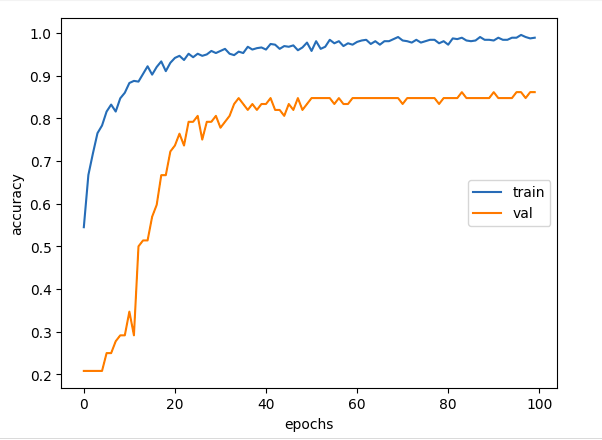Downloads: 1
Diff of
/README.md
[000000]
..
[caf6fb]
Switch to unified view
| a | b/README.md | ||
|---|---|---|---|
| 1 | |||
| 2 | # Lung cancer detection |
||
| 3 | |||
| 4 | This project aims to detect lung cancer from CT-Scan images using deep learning techniques. The dataset used in this project contains CT-Scan images of Adenocarcinoma, Large cell carcinoma, Squamous cell carcinoma, and normal cells. The dataset can be found [here](https://www.kaggle.com/datasets/mohamedhanyyy/chest-ctscan-images?resource=download). |
||
| 5 | |||
| 6 | ## Dataset Description |
||
| 7 | |||
| 8 | The CT-Scan images are in jpg or png format to fit the model. The dataset contains four main folders: |
||
| 9 | |||
| 10 | - `Adenocarcinoma`: contains CT-Scan images of Adenocarcinoma of the lung. Adenocarcinoma is the most common form of lung cancer, accounting for 30% of all cases overall and about 40% of all non-small cell lung cancer occurrences. |
||
| 11 | |||
| 12 | - `Large cell carcinoma`: contains CT-Scan images of Large-cell undifferentiated carcinoma of the lung. This type of lung cancer usually accounts for 10 to 15% of all cases of NSCLC. |
||
| 13 | |||
| 14 | - `Squamous cell carcinoma`: contains CT-Scan images of Squamous cell carcinoma of the lung. This type of lung cancer is responsible for about 30% of all non-small cell lung cancers, and is generally linked to smoking. |
||
| 15 | |||
| 16 | - `Normal`: contains CT-Scan images of normal cells. |
||
| 17 | |||
| 18 | |||
| 19 | The dataset is divided into three sets: training, testing, and validation. The `training` set contains 70% of the data, the `testing` set contains 20% of the data, and the `validation` set contains 10% of the data. |
||
| 20 | |||
| 21 | ## Technologies Used |
||
| 22 | |||
| 23 | This project was implemented using the following technologies: |
||
| 24 | |||
| 25 | - `TensorFlow` and `Keras`: for building and training the deep learning model. |
||
| 26 | - `ImageDataGenerator`: for data augmentation. |
||
| 27 | - `ResNet50`, `VGG16`, `ResNet101`, `VGG19`, `DenseNet201`, `EfficientNetB4`, `MobileNetV2`: pre-trained models used for transfer learning. |
||
| 28 | - `PIL`, `OpenCV`: for image processing. |
||
| 29 | - `Matplotlib`: for visualizing the training and validation results. |
||
| 30 | |||
| 31 | ## Model Architecture |
||
| 32 | |||
| 33 | The deep learning model used in this project is a convolutional neural network (CNN). The model consists of several layers including convolutional, max pooling, batch normalization, and dense layers. Transfer learning is used by initializing the model with pre-trained weights from one of the above-mentioned pre-trained models. |
||
| 34 | |||
| 35 | The model was trained using the `Adam` optimizer with a learning rate of 0.001, a batch size of 16, and a total of 50 epochs. |
||
| 36 | |||
| 37 | ## Results |
||
| 38 | |||
| 39 | The model achieved an accuracy of 95.2% on the testing set. The training and validation accuracies and losses for each epoch are visualized below: |
||
| 40 | |||
| 41 |  |
||
| 42 | |||
| 43 | ## Checkpoints |
||
| 44 | |||
| 45 | Two checkpoints were saved during the training process. These checkpoints can be used to resume training or to evaluate the model on new data. |
||
| 46 | |||
| 47 | ## Credit |
||
| 48 | |||
| 49 | This notebook was created by the Lovelace team,, for the AI_NIGHT_CHALLENGE competition. |

 Datasets
Datasets
 Models
Models